A great robot vacuum can save you both time and effort. As a TechRadar Homes Editor specializing in floor-cleaning appliances, I spend plenty of time reading and writing about the latest robot vacuums developments, as well as testing a range of models at different price points.
Today’s very best robot vacuums can arrive with a War and Peace-length features list, and figuring out what it all means can be tricky. Especially since brands in this space tend to shy away from easily comparable specs in favor of long descriptions and impressive-sounding jargon.
Below, I’ll run through the various features of robot vacuum cleaners, unpacking the jargon to help clarify what each one does. Read on to discover an easy to understand guide that will ultimately help you find the right model of robot vacuum for you.
Suction power
Table of Contents
Figuring out how much suction a vacuum cleaner offers can be a surprisingly tricky process when it comes to manual models. Thankfully, it tends to be more straightforward with robot vacuums, since most brands will publish these specs. Measured in pascals (Pa), the figure refers to how much air pressure the machine can create – and, as a result, how much force with which it pulls up dust and debris.
Today’s top-specced robovacs, such as the Ecovacs Deebot T30S Combo (pictured), can generate upwards of 10,000Pa of suction. That’s rare, however; for that kind of power, you’d be looking to pay a price that’s four figures. In the mid-range, expect 5,000-7,000Pa of suction. Lower than 5,000Pa is what I’d expect in a budget-friendly model.
Although Pa figures can be a useful initial indicator of suction power, it isn’t the be-all and end for cleaning. Bear in mind that these specs reference the maximum suction; it’s unlikely you’ll be doing a regular cleaning session at that rate.
Design aspects such as the brushroll type, edge cleaning features and – on more premium models – smart suction adjustment also play a part in how well a robot vacuum cleans. I suspect this is the justification for the brands that don’t publish suction stats (looking at you, iRobot Roomba).
It’s also worth noting that robot vacuums are really designed for convenient, light cleans that are carried out regularly. For a deep clean, you’ll probably need to keep one of the best manual vacuums to hand.
Mopping functionality
Many of today’s best robot vacuums can also mop floors. And you might be more surprised to learn that brands appear to be increasingly moving away from vacuum-only robots, focusing on combo models in their new releases.

Robot vacuum mopping capabilities remain quite limited compared to what you’d be able to achieve with a standard mop and some elbow grease; don’t expect such a cleaner to really scrub your floors. However, for regular, light cleans, a combo robot vacuum and mop can be effective.
There are two common mop types: a semicircular mop pad that presses down and/or vibrates as it cleans, or two flat disc-shaped mop pads that rotate. In my experience, the latter tend to be more effective at cleaning.
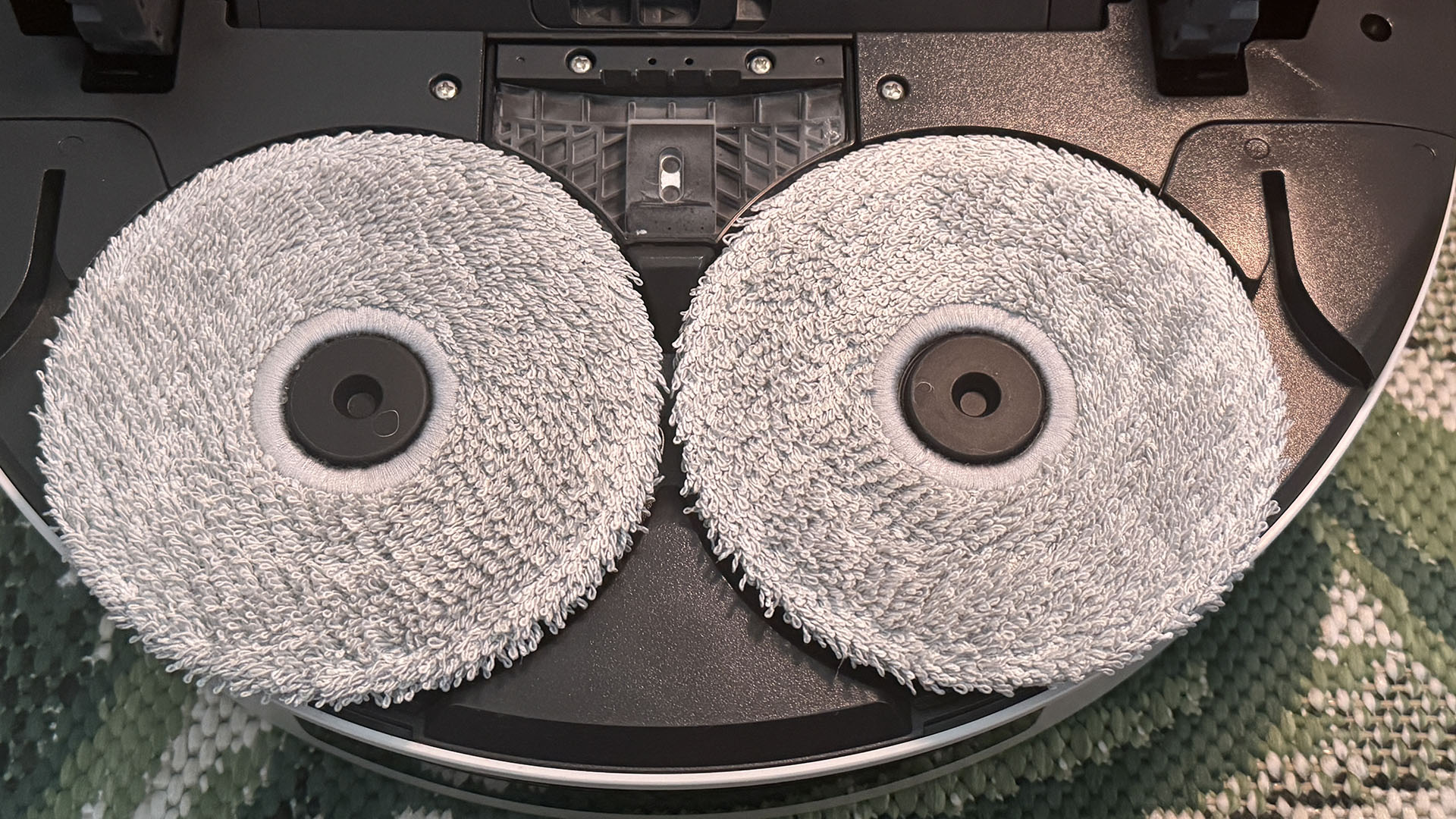
Other things to factor in when considering a vacuum with a mop function is the level of downward pressure the mop pads apply while cleaning, and if the model has a means for tackling edges. Additional side mops are rarer than side brushes, but not unheard of (the Roborock S8 MaxV Ultra has one, for instance) and the Dreame L40 Ultra – review in progress – has a mop that can shift out to the side to clean the edges of rooms.
If you have some deep-pile carpets or thick rugs, check what the robot vacuum does with the mop when it’s not mopping. Most robovacs can lift up their mop pads to avoid cross-contamination from hard floor to carpet.
More advanced models such as the Dreame L40 Ultra and the Samsung Bespoke Jet Bot Combo AI have pads that attach magnetically, leaving them in the dock when just a vacuum is required. The Robot Roomba Combo J7 Plus has a mop pad that repositions itself on top of the robot body when it isn’t in use.
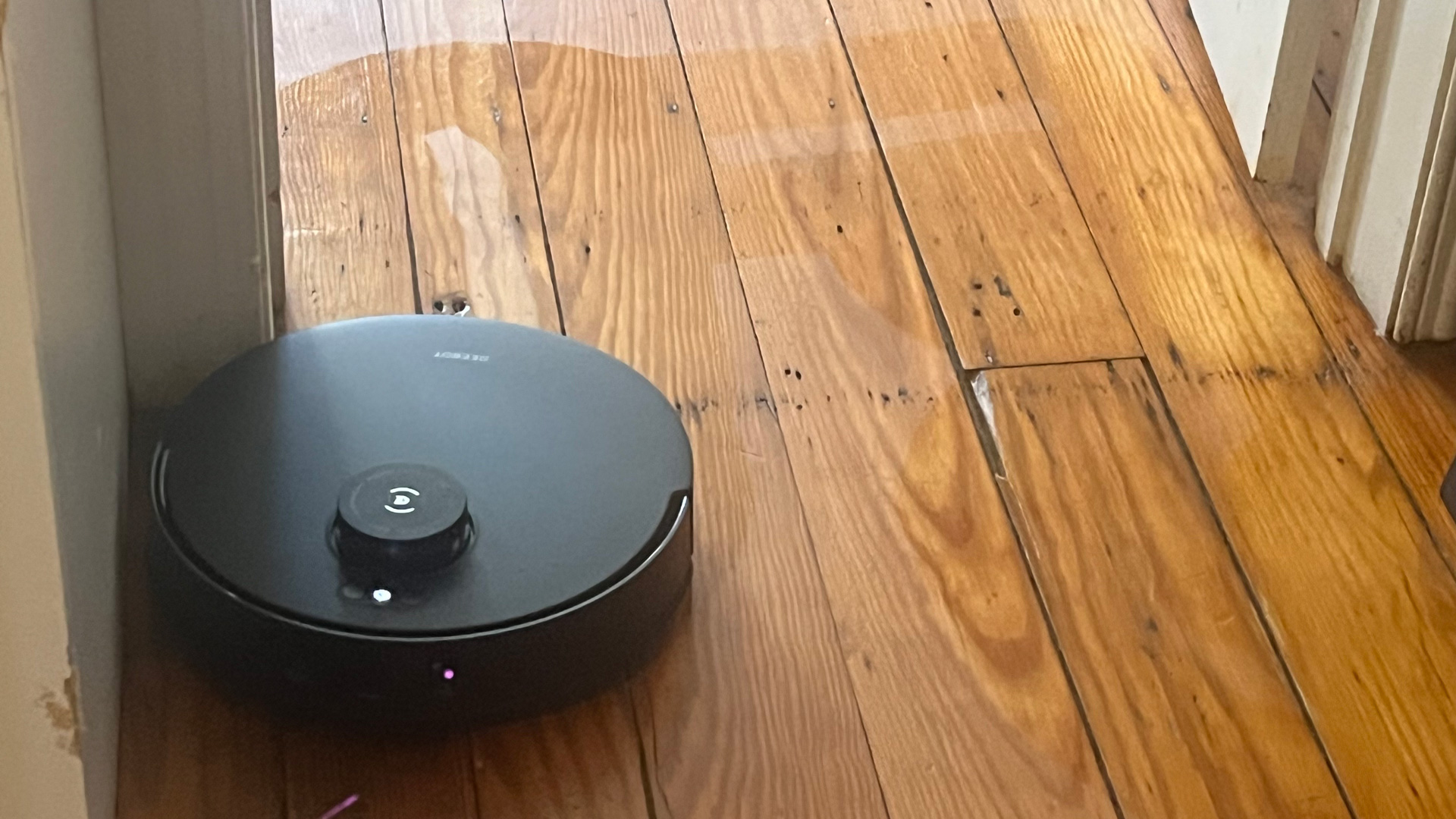
Combo models are generally more expensive than vacuum-only robots. Some brands, such as iRobot, will offer vac-only or combo versions of the same model, meaning you can pick the one that suits your needs and budget.
Pricier self-empty models will arrive with a dock that’s able to empty and refill the onboard water tanks (more on that in the Dock section), but basic models will likely require you manually swap the dust bin for a water tank when switching from vacuum to mop mode.
Robot height and clearance
Robot height is relevant if you have low (but not too low) furniture. A robot with a relatively reduced height will be able to clean right under your sofa and other furniture, saving you a huge amount of effort.
We’re yet to see a robot that can climb stairs. Almost all will come equipped with cliff sensors that help them identify and avoid any changes of floor level, so while you won’t have to deal with your robovac flinging itself down your stairs, you will have to come up with an alternative vacuuming solution if you live in a multi-floor home.

While stair-climbing remains a distant dream, brands are increasingly focused on pushing the boundaries of what their robovacs can get over. High thresholds or chunky rugs can easily beach a robot vacuum, requiring manual rescuing and negating many of the benefits of this ostensibly hands-off cleaning solution.
The Roborock Qrevo Curv (shown above, review in progress) has quadbike-like suspension to bounce it over obstacles, and a number of other brands have come up with alternative solutions.
Self-clean and self-empty docks
The fanciest robovacs on the market have docks that can take care of all kinds of things for you. The most common additional feature is automatic emptying of dust, from the onboard dustbin to a much larger one housed in the dock.
If dust builds up quickly in your household, or you have a shedding pet, for example, I’d recommend prioritizing this feature. Onboard dustbins are necessarily small, so if you don’t have a self-empty dock then you’ll need to be prepared for regular manual emptying.
However, be aware that adding self-empty capabilities will also bump up the price – not inconsiderably – as will all the auto-maintenance features discussed here.
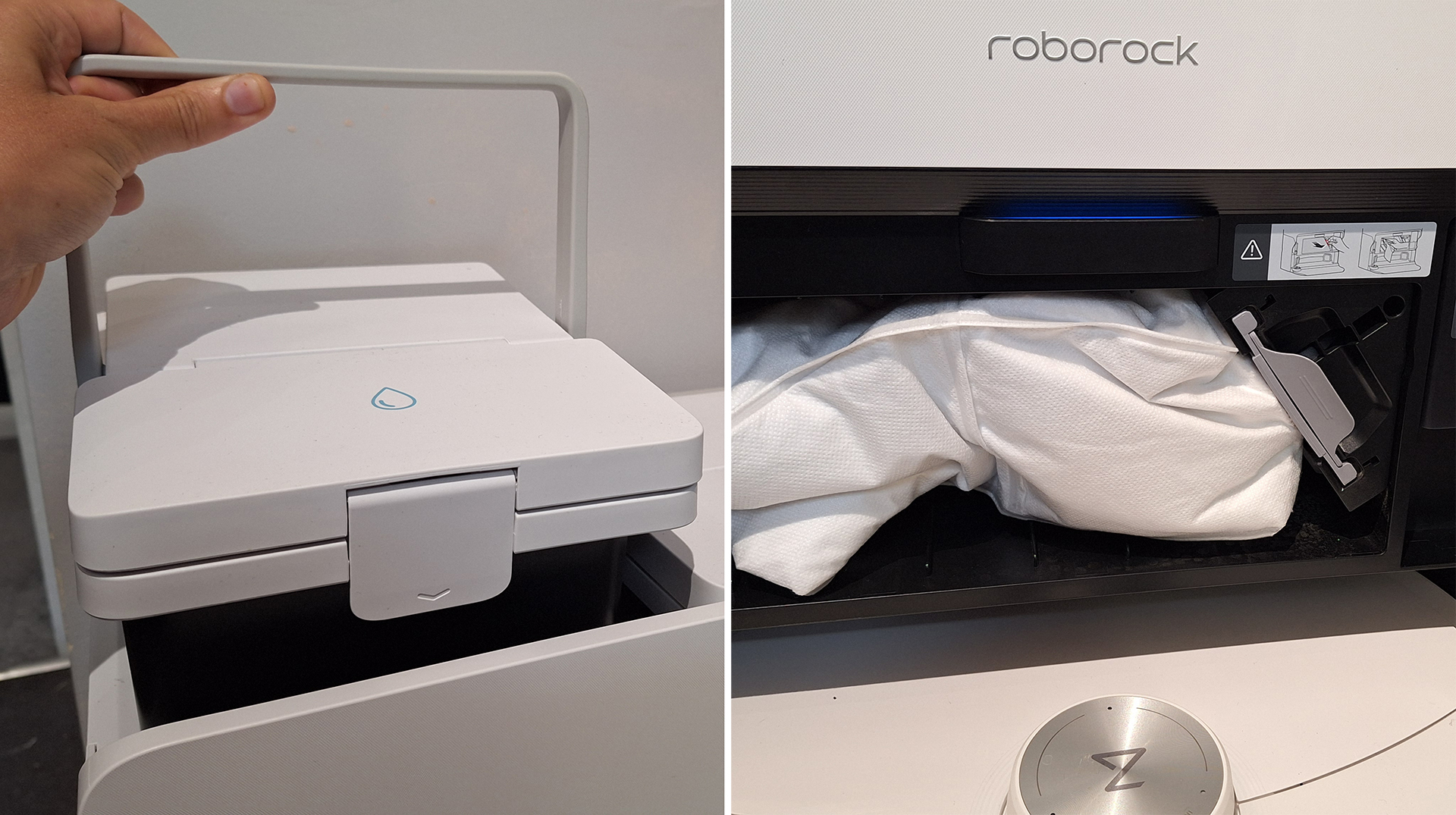
If you have a combo robovac, then the dock might also be able to empty and refill the onboard water tank, as well as automatically adding cleaning fluid. This will be more useful if you have a large house with lots of hard floors. However, this type of dock tends to be large, so do make sure you’ve factored in how much space you’ll need.
The most advanced models on the market have docks that can clean the robot mop pads, either with cold or hot water, or even with steam, to remove grease. You will need to supplement this with occasional manual deep cleaning of the mop pads, but it will lower the amount of maintenance required from you.
Edge cleaning features
Most robovacs are round in shape, which presents an issue when it comes to getting close to edges and into the corners of rooms. Dyson’s solution was to make its 360 Vis Nav robovac D-shaped, but that never really took off.
The most common solution to edge cleaning is to have a spinning side brush, either made from a rubbery material or bristles, which flicks dirt into the robovac’s suction path. This method is limited in its effectiveness, often leading to debris being propelled right across the floor. Beware also that long hair tends to tangle round these little spinners. A handful of models have an extending side brush, deployed when the robot senses it’s close to the edge of a room, to enable it to reach further.

The Shark PowerDetect Robot Vacuum takes a different tack, blasting out air to blow dirt rather than flicking it. This model also has an extending mop pad that can get closer to the edges of rooms. However, on test, we found that over-sensitive obstacle detection meant the robovac rarely got close enough to the edges of rooms to make these features effective.
And that, in a nutshell, is the issue with trying to predict edge-cleaning abilities. There’s no failsafe “best” solution; in most cases, you’ll need to read a review to find out if a design works as promised.
Object avoidance and navigation
The cheapest models on the market don’t map your home, and will tend to wander about fairly randomly, learning where not to go by simply backing away when they bump into things. They’ll cover your whole floor every time they head out – you won’t be able to request more specific cleaning tasks – and they might end up going over the same area multiple times. This will be perfectly acceptable for some people’s needs.
More advanced models use various sensors and cameras to create a map of your space. (Some will have the ability to store maps for more than one floor, although you’ll have to manually transport between floors, because stairs remain an insurmountable hurdle.)
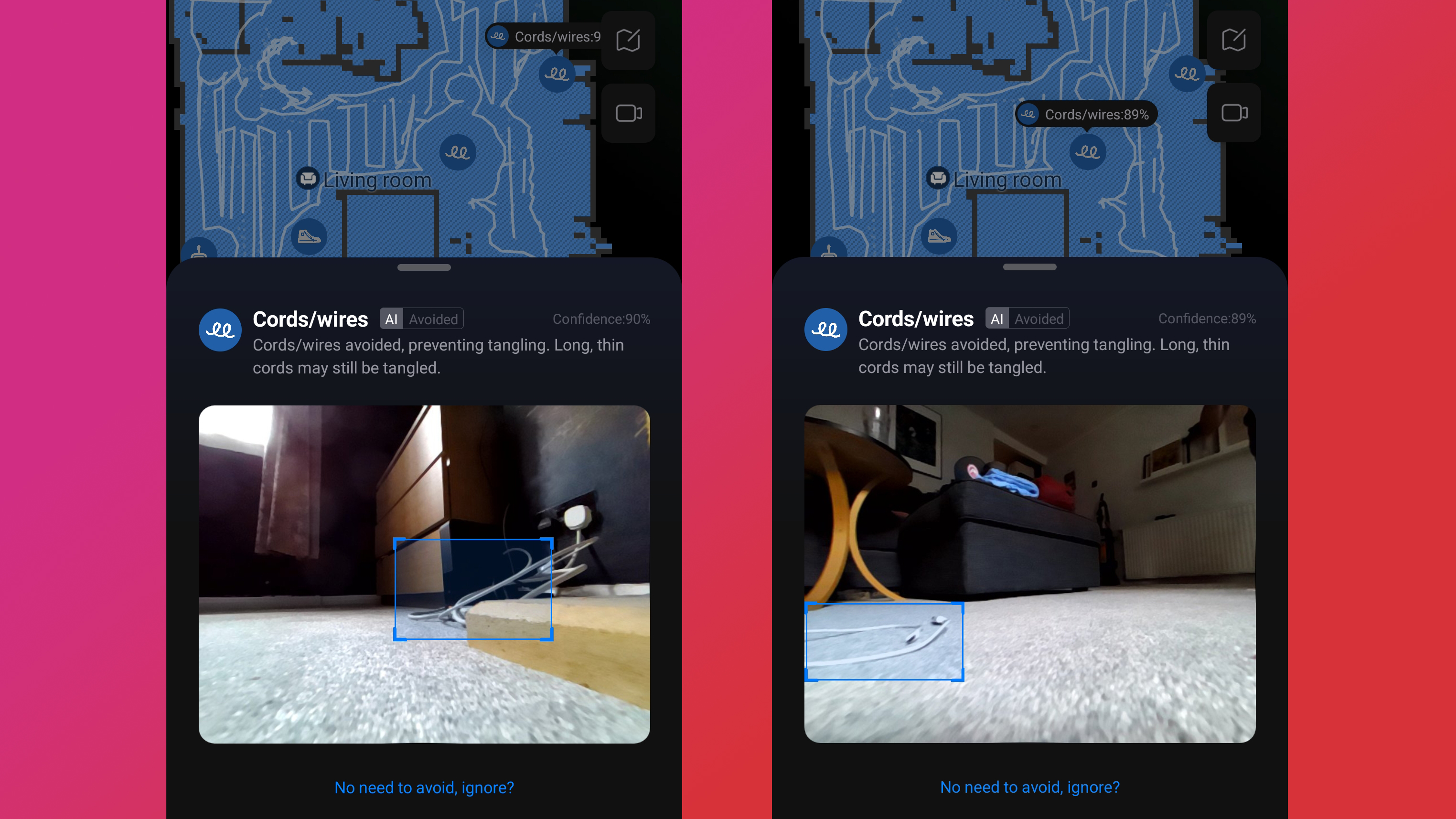
You’ll be able to label rooms – some robovacs will even take an educated guess at that themselves – and then request that your robot vacuum cleans just the bathroom, for instance. Your robovac might even be able to figure out an optimal cleaning route, and/or identify dirtier areas where it will spend more time cleaning.
Related to navigation is obstacle avoidance. The holy grail here is a robot vacuum that can identify objects, and then deduce whether to get right up close (baseboards and furniture, for example) or give them a wider berth (say, dog poop and cables).
Smart features
Robot vacuums will typically have a few physical buttons that set off basic tasks. At the very cheapest end of the market, you’ll be using these, and/or perhaps a remote control, to instruct your robovac.
However, the majority of robot vacs from well-known brands are Wi-Fi enabled and come with a companion app that offers more granular control.
Exactly what you can achieve will vary by brand, but common functions include the ability to launch your robot remotely, check its status, view cleaning routes or progress, set no-go zones, and set a daily or weekly cleaning schedule.
Upper-mid range models might be compatible with common third-party voice assistants such as Alexa and Google Assistant, and premium models might even have their own built-in voice assistant.
Price
Pricing for robot vacuums can range massively. At TechRadar, these are the price bands we use:
- Budget: less than $500 / £400
- Mid-range: $400-$800 / £400-£650
- Premium: $800+ / £650+
Those brackets are mainly to ensure consistency when it comes to comparing models – I appreciate that different people will have different perceptions of what is “budget” and so on.
Bear in mind that features such as mopping, self-emptying, and self-cleaning will all result in price bumps. Some brands create the same model with different dock options, or with or without mopping, enabling you to select the one that meets your needs.
Currently, the biggest brands seem to be launching a number of new models each year. Often the differences between various models is minimal, and the ranges are confusing to navigate as a buyer.
For the very latest, flagship models, pricing in the four figures isn’t unusual, but most people won’t need such an advanced option. Robot vacuum cleaner brands are constantly trying to one-up one another, but the rate of meaningful improvement has started to slow down in recent years. A model that’s a bit cheaper as a result of being a couple of years old can often deliver the best value for money, with very few sacrifices in performance.
In general, it isn’t hard to find deals on robot vacuums, and older models in particular. The Black Friday sales can be an especially good time to shop for household appliances in general, and robot vacuums are no exception.
Bin size
Robot vacuums tend to have fairly small onboard dustbins – certainly nowhere near as big as you’d find on a manual vacuum. If you opt for a model that doesn’t have a self-emptying dock, you’ll need to be prepared to empty it yourself. If you do have a version with a self-emptying dock, pay attention to the capacity of the dock bin and make sure it fits your needs. If you’re regularly dealing with large amounts of hair or dirt, then I’d recommend going for a version with a self-emptying base, and one with a decent bin capacity.
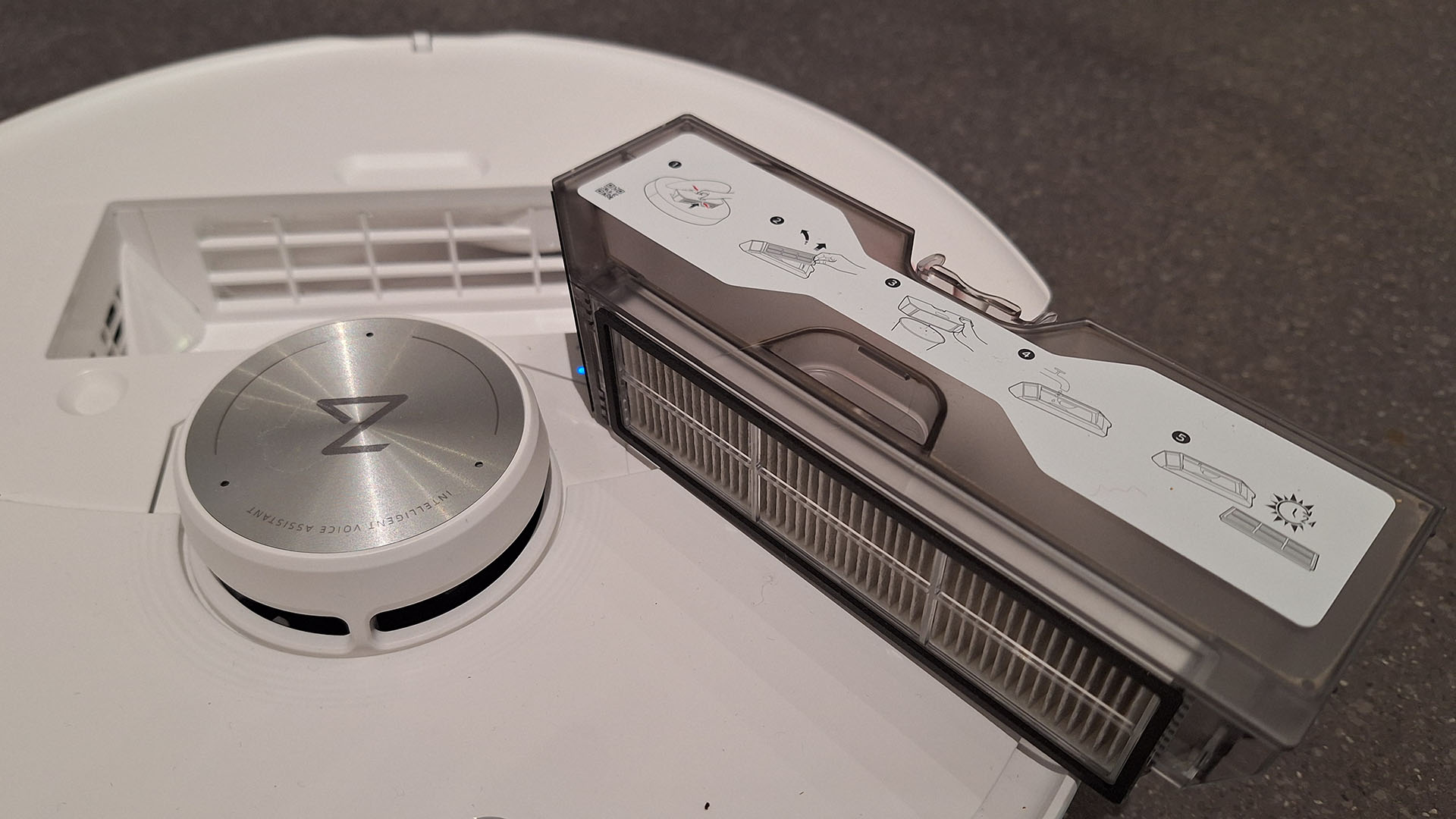
Battery life
Battery life is a major consideration if you’re on the hunt for one of the best cordless vacuums, but I tend to think it’s less important when shopping for a robot vacuum. Since a robot vacuum is operating independently, and will dock when it needs to charge, and set out again when it’s able, interruptions to the cleaning cycle are less disruptive. This is especially so if you’ll be mostly setting your robovac to clean floors while you’re out of the house.
However, if you have an especially large house, or it’s a priority that your robot vacuum cleans efficiently, it’s worth paying attention to runtime specs.
Hair-tackling features
When I talk about hair-tackling features, I mean two things. The first is how well the robot can pick up hair – for example, if you have a shedding pet. The second is how effectively it deals with the hair it has picked up; directing it into the bin rather than letting it tangle around the mechanism.
On the first point, today’s best robot vacuums for pet hair tend to have higher levels of suction, and rubbery brushrolls that can grip hair. The dual rubber brushrolls on Roborock robovacs, for example, have proven particularly good at hair pickup.
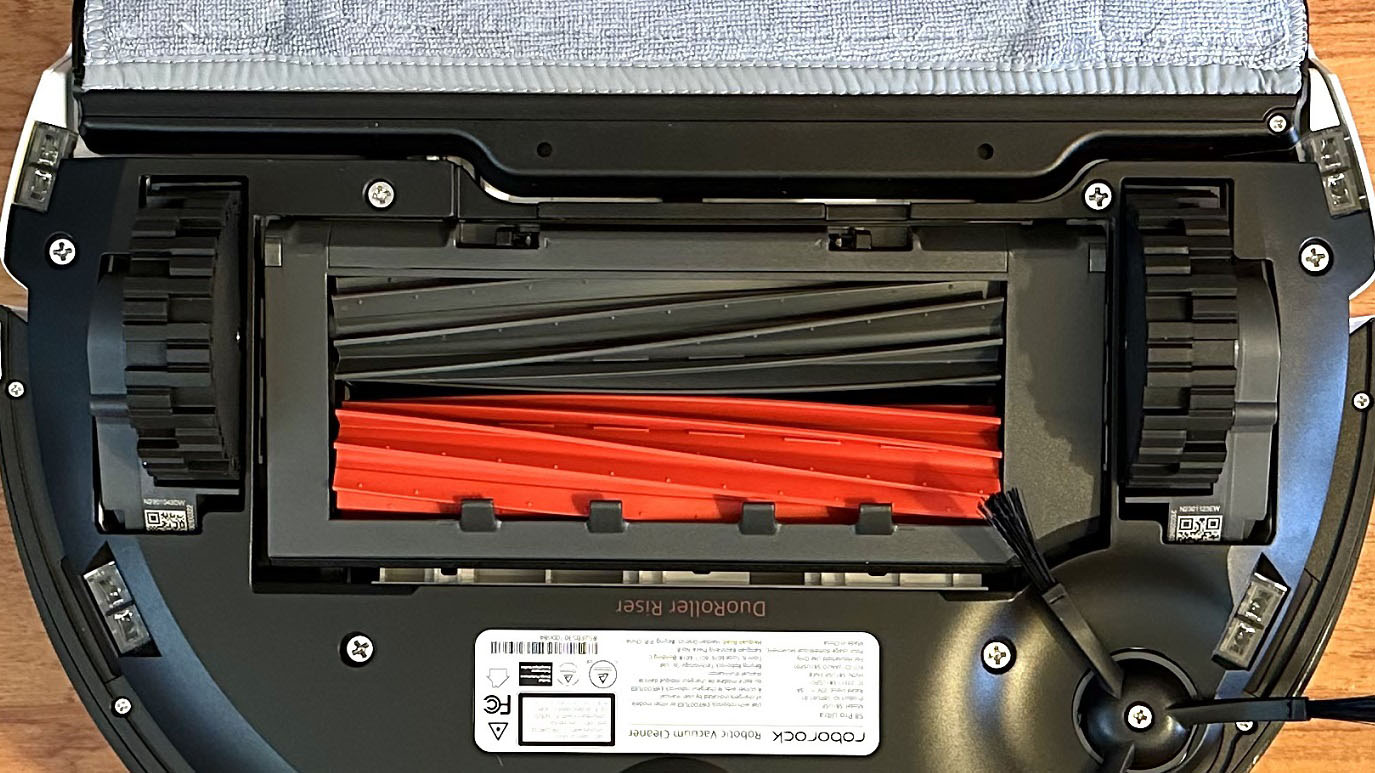
On the latter point, if you have long hair, or live with anyone who does, you’ll know the pain of tearing matted clumps from your vacuum’s brushrolls on a regular basis. For whatever reason, I (with collarbone-length hair, or longer) don’t have nearly as much of a problem with this on the robot vacuums I test compared to my regular manual vacuum cleaner.
When hair does need clearing, it’s far easier to remove hair from rubbery rollers compared to bristles, and especially since you should be able to take the rollers out of the robovac first to tackle this task. Spinning side brushes can prove much more of a challenge, however.
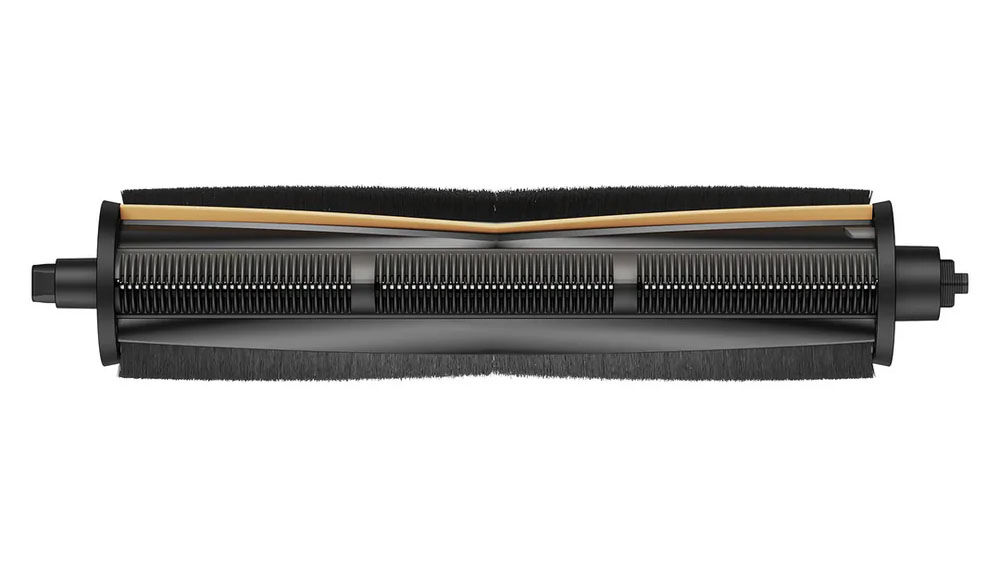
Some brands have come up with specific ways safeguarding against tangling – for example, using tapered rollers that direct the hair to the smaller end, where the dustbin inlet is located, or having the inlet in the center and a break in the rollers where hair can escape. Dreame makes a “Tricut” roller, which has little scissors to snip long hair into shorter, more manageable pieces as it enters the robot.
Pet features
Owners of mud-loving or especially hairy pets have more reasons than most to get on the robot vacuum bandwagon, but some models are more likely to play nice with your four-legged friend than others.
In the early days of robot vacuums, there would be the occasional horror story of a pet-owner whose dog/cat/other had a toilet mishap, and the robovac had failed to identify it, instead smearing it around the entire house like some avant-garde art project. The accompanying photos of a sad local and their cream-now-brown carpets might have been enough to put off any pet owner from purchasing a robovac for good.
Even if your pet is generally well house-trained, most of the big robot vacuum brands have gone out of their way to specifically remove all possibility of a poo disaster in their more premium models. Generally, this is by training them to recognize and avoid it. iRobot offers reassurance via its Pet Owner Official Promise, which promises to replace any model that falls short on this front. (My personal opinion is that the firm just wanted to use the acronym, because by that point the damage would have been done, and I’m not sure how happy I’d be with a free robovac in exchange for a poo-covered home.)
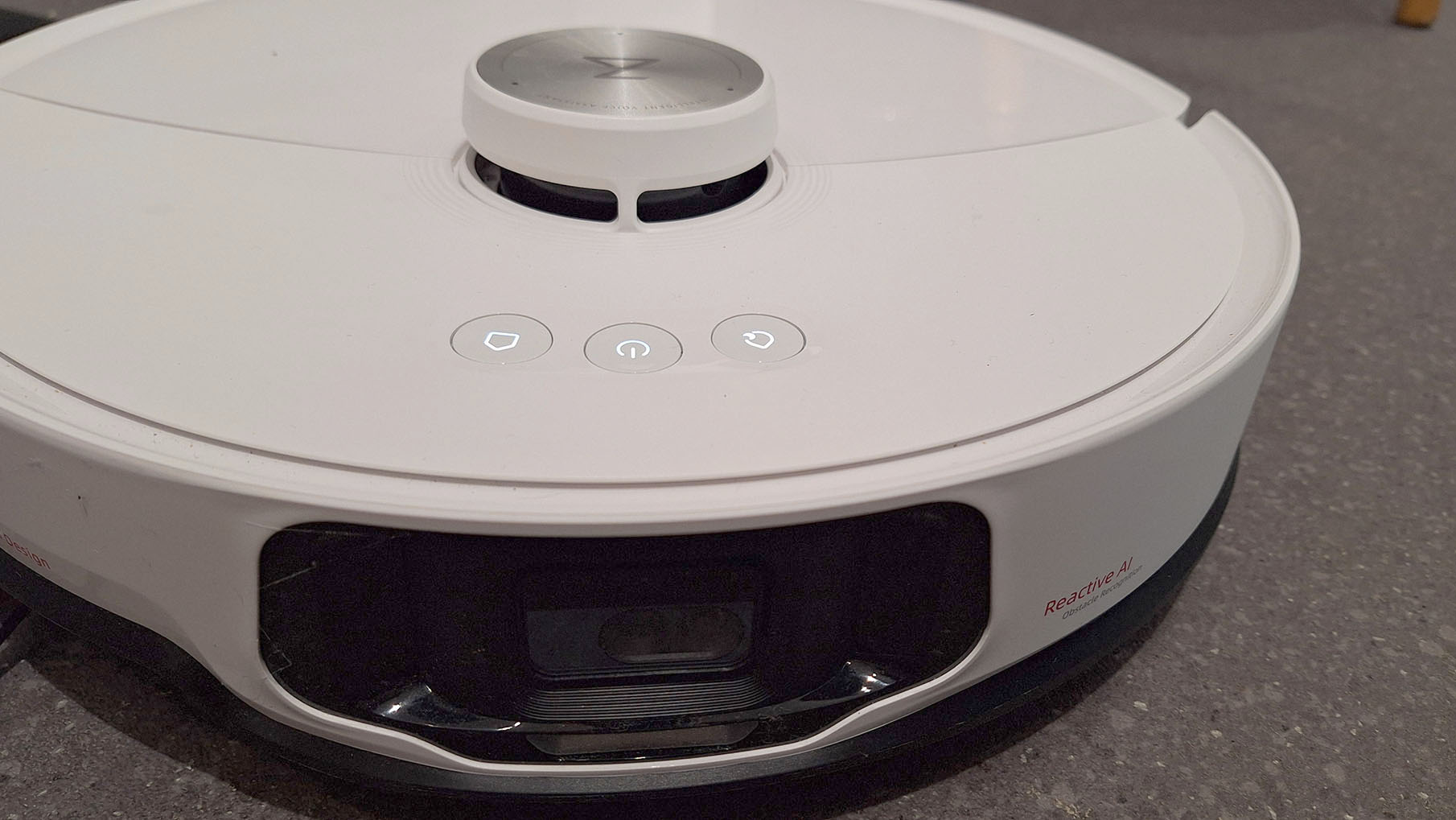
If you have a skittish pet or one that might be easily unsettled by sentient appliances, some robot vacs can be set to identify and avoid rooms with pets in. Alternatively, you can use your robot vacuum to check in on your pet while you’re out. The Roborock S8 MaxV Ultra has a Pet Patrol feature, whereby it will hunt out and photograph your pet, and you can even talk directly to your furry friend via the two-way mic. These are premium features, so don’t expect them on anything but the most expensive robot vacuums.
Security features
If you’re willing to spend a bit more, you can get a robot vacuum that doubles as a home security device, too. Premium models often come with a camera that can beam footage to your phone, enabling you to see what’s going on while you’re out – even if that’s just checking in on your dog.

























